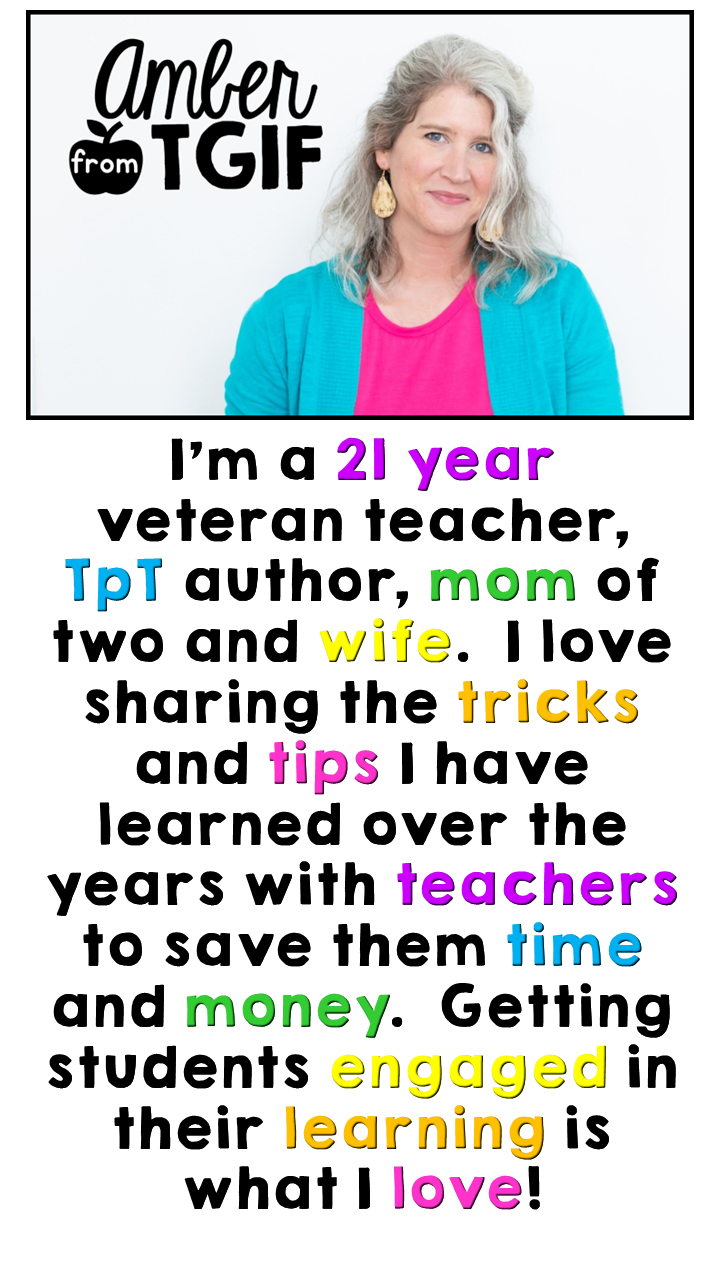As a third grade teacher, I can
tell you distributive property of multiplication can be a frustrating topic to teach, especially if your
curriculum thinks your students are going to magically learn this in one
day. Nope! The curriculum books usually fail miserably introducing the concept of distributive property, so I am going to give you ALLLL my tips to help make it a success in your classroom! I teach this concept over two to three days
and I continue to review it every once in a while over the next few weeks (or
else I might as well not teach is at all since they will forget it in a day).
Here is how I break it down.
Day One Plans
Where
Do I Start?????
I start with giving my students a
pre-printed array that is a fact I know they won’t have memorized like 5x16. I ask my
students to work with a partner to figure out the product. I give them two minutes to come up with an
answer. Some of them will count the
tiles and get it right, but we will end up with several answers.
 I will then ask them to try to
solve another ridiculously hard multiplication problem (ex. 17 x 4). I let them use dry erase boards, beans,
pencil paper, color tiles or whatever they want to try to solve it. We share our answers (as we usually have
several different answers – some right and others wrong). We also share “how” we tried to solve it and
we also talk about how it was time consuming to draw pictures of all of
it.
I will then ask them to try to
solve another ridiculously hard multiplication problem (ex. 17 x 4). I let them use dry erase boards, beans,
pencil paper, color tiles or whatever they want to try to solve it. We share our answers (as we usually have
several different answers – some right and others wrong). We also share “how” we tried to solve it and
we also talk about how it was time consuming to draw pictures of all of
it.
We will spend the majority of the
rest of the class period trying to solve tougher multiplication problems using
arrays and breaking them apart.
How
to Break Apart Arrays
 I show my students HOW to break
apart arrays into simpler facts they already know. I display this on my SmartBoard or
show them with color tiles. For larger
facts (14 x 5) I will show them how to split 14 into 10 and 4 and for smaller
facts (3x9) I will show them how to split the 9 into 5 and 4. I always encourage them to find numbers they
are fast at (5’s 2’s 10’s, etc.) This
step of knowing how to break apart a number into smaller numbers that they know
the multiples for is a critical step.
I show my students HOW to break
apart arrays into simpler facts they already know. I display this on my SmartBoard or
show them with color tiles. For larger
facts (14 x 5) I will show them how to split 14 into 10 and 4 and for smaller
facts (3x9) I will show them how to split the 9 into 5 and 4. I always encourage them to find numbers they
are fast at (5’s 2’s 10’s, etc.) This
step of knowing how to break apart a number into smaller numbers that they know
the multiples for is a critical step.  We use dry erase boards, paper
arrays that we cut apart and color tiles that we break apart with our pencils
into smaller multiplication facts. When
they break apart the arrays I have them write the two smaller multiplication
facts underneath, write the two products and then add them. This helps them make the connection to WHY we use distributive property. After some practice and they
understand WHY we break apart the arrays, we are now ready to use distributive
property on those larger facts.
We use dry erase boards, paper
arrays that we cut apart and color tiles that we break apart with our pencils
into smaller multiplication facts. When
they break apart the arrays I have them write the two smaller multiplication
facts underneath, write the two products and then add them. This helps them make the connection to WHY we use distributive property. After some practice and they
understand WHY we break apart the arrays, we are now ready to use distributive
property on those larger facts.
Distributive
Property
 I end the day by working with the
students to take what they learned to make an anchor chart. Since drawing is not my thing, I cheated and
made an anchor chart on the computer to print.
We put it together in class. It
shows all the proper steps that we will be practicing on paper tomorrow!
I end the day by working with the
students to take what they learned to make an anchor chart. Since drawing is not my thing, I cheated and
made an anchor chart on the computer to print.
We put it together in class. It
shows all the proper steps that we will be practicing on paper tomorrow!
The printables that are shown are available for purchase in this Distributive Property of Multiplication resource pack, but they can also be easily made using grid paper, index cards, paper protector sheets, and a good old fashioned pen and paper. It's how I make most of the additional resources in my classroom (until I have enough time to make it on the computer).
Day
Two Plans
Review
with Manipulatives
I start the day with a quick review
of breaking apart our multiplication facts using anything – beans, pencil and
paper, color tiles, dry erase.
Distributive
Property on Paper
 |
| Printables available on Teachers Pay Teachers |
Then we move right into using
Distributive Property dry erase mats and pre-printed multiplication fact
cards. This helps me differentiate with
groups and individuals when needed.
My biggest tip here is to have the students CIRCLE the factor they are
going to break apart. It is a great
visual reminder.
Mini
Books
 |
| Click here if you are interested in purchasing these printouts. |
I also print out some grid paper
and have my students cut out arrays. On
the top of the book we show the steps and on the bottom of the paper, we
physically cut apart the array. The mini
books are helpful because they are only looking at one “problem” at a time and
they don’t tend to get overwhelmed.
Making the cuts take some planning so I encourage them to write out
their two factors and circle the one they are breaking apart before cutting the
array.
Color
the Arrays
Another method we use to practice is to color code everything! As you can see in the picture, we write
the factors in the large array in pink and decide which one to break apart by
circling it. Then we use two different
colors to show how we broke it apart both in the array and in the number
sentence.
It is my sincere hope that after reading this post, you have gained some new inspiration and confidence for teaching the distributive property of multiplication. You have the tools (beans and your ingenuity) to make it work, but if you want some printable resources (because let's face it - teaching is tiring), you can find loads of help in this Distributive Property of Multiplication resource pack.















No comments